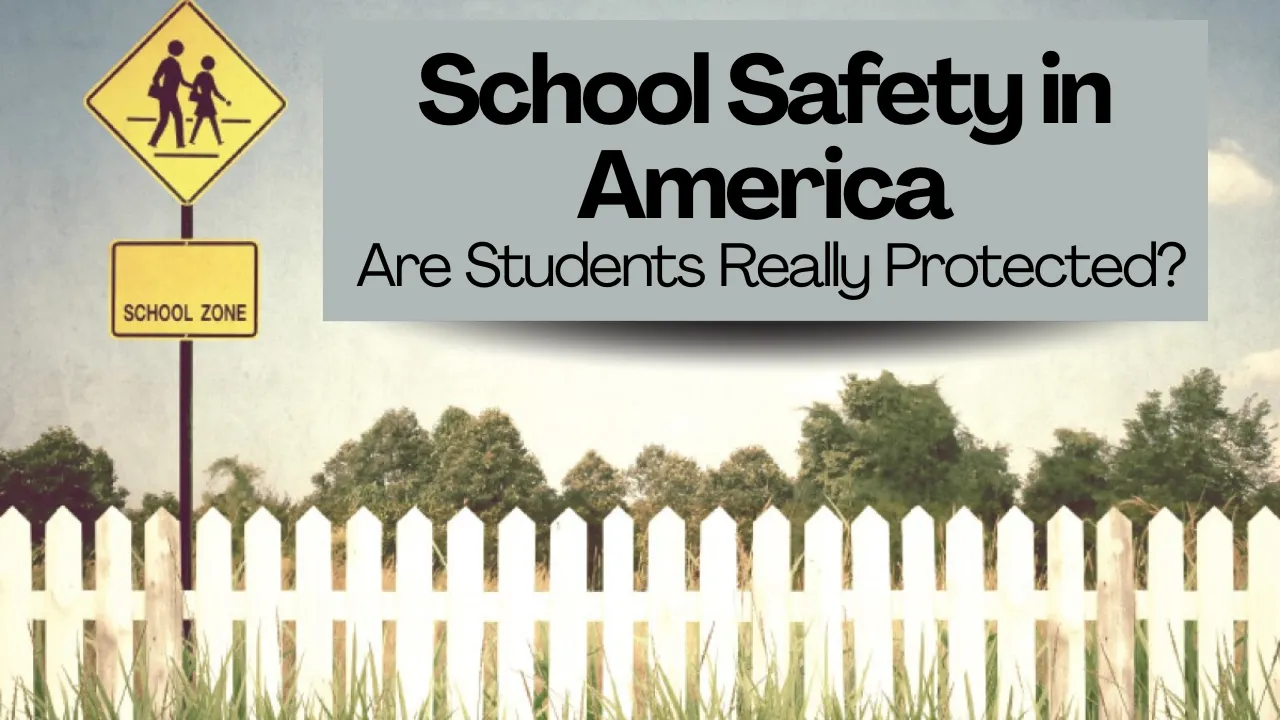School Safety in America: School is supposed to be a safe haven—a place where children learn, grow, and connect. Yet in recent years, concerns about violence, bullying, mental health crises, and even cyber threats have made school safety in America one of the most urgent and emotionally charged topics in education. Parents send their children to school with hope, but often with quiet fear. Are schools truly equipped to protect students in today’s unpredictable climate?
While much has been done to address these fears—like security upgrades, lockdown drills, and mental health initiatives—the question remains: are we doing enough? This article takes a deeper look at the safety systems in place, the gaps that still exist, and how communities can work together to better protect students.
School Safety in America
School safety in America has evolved dramatically over the past two decades. Once centered around fire drills and evacuation plans, today’s safety efforts must consider everything from active shooter threats to mental health emergencies, cyberbullying, and student well-being. Security cameras, school resource officers, metal detectors, and anonymous tip lines have become more common in districts across the country.
Yet despite these precautions, incidents of school violence and student distress continue to make headlines. The truth is, while technology and tactics have improved, many schools still struggle to provide a consistently safe and supportive environment for every student. Protection now goes beyond the physical—it must include emotional, digital, and social dimensions too.
Overview of School Safety Measures in America
| Safety Area | Common Practices | Challenges and Limitations |
| Physical Security | Cameras, access control, SROs | High costs, over-policing, fear among students |
| Mental Health | School counselors, SEL programs | Lack of funding, staff shortages |
| Emergency Drills | Lockdowns, evacuations, safety training | Can cause stress or trauma, especially in youth |
| Cyber Safety | Monitoring tools, digital literacy | Privacy concerns, uneven enforcement |
| Bullying Prevention | Awareness campaigns, anti-bullying laws | Underreporting, limited staff intervention |
Physical Safety Measures: A Layered Approach
When most people think about school safety, they picture visible security—locked doors, security guards, and video cameras. Many schools have adopted layered security strategies to limit access and respond quickly to threats. Entryways are now fortified, visitors must sign in with ID, and some campuses use metal detectors.
However, physical security alone doesn’t guarantee safety. These tools help deter outside threats, but many school incidents stem from within. Weapons may still enter undetected, and students facing emotional crises often slip through the cracks. What’s needed is not just more equipment—but more human connection.
The Role of School Resource Officers
School Resource Officers (SROs) are law enforcement officers assigned to schools. Their presence is meant to build trust, respond to emergencies, and prevent violence. While many schools report positive relationships between SROs and students, the reality is more nuanced.
Some communities raise concerns about racial bias and over-policing, especially in schools with large populations of students of color. Others see SROs as important mentors who deescalate conflict and build community relationships. What’s clear is that their role must be clearly defined, balanced, and accompanied by robust student support systems—not replace them.
Mental Health and Emotional Support
More than ever, mental health is a core part of school safety in America. Depression, anxiety, and trauma are rising among children and teens. Without proper intervention, emotional issues can escalate into crises that disrupt the entire school environment.
To address this, schools are investing in mental health resources like full-time counselors, psychologists, and SEL (Social Emotional Learning) programs. These help students learn how to manage stress, resolve conflict, and build resilience. However, many districts still fall short—either due to budget limitations or staffing shortages. The national average is one counselor for every 408 students, far from the recommended 250-to-1 ratio.
Cyberbullying and Digital Threats
Safety doesn’t stop at the school gates. With students spending hours online, digital spaces have become new arenas for harassment, threats, and emotional harm. Cyberbullying is one of the most damaging trends affecting youth today, leading to isolation, depression, and even self-harm.
Some schools now monitor digital platforms for signs of bullying or threats. Others teach digital citizenship—encouraging responsible, respectful online behavior. While tools and tracking can help, education and open dialogue between teachers, parents, and students are even more effective in curbing online harm.
Uneven Protection: A Safety Gap Across Communities
Unfortunately, not all students in America receive the same level of safety. Urban schools may have more visible security, while rural schools often face long emergency response times. Wealthier districts can afford advanced systems and full-time counselors, while underfunded schools struggle with outdated facilities and minimal mental health support.
This imbalance reveals a troubling truth: student safety is sometimes determined by geography and funding, not need. To create true safety equity, policymakers must invest in education reform, training, and infrastructure improvements across all regions—not just in high-profile areas.
Are Today’s Efforts Enough?
While we’ve made strides, many students still feel unsafe in school. Between active shooter drills, bullying, and emotional pressure, some children experience chronic fear rather than a sense of belonging. Safety isn’t just about preventing danger—it’s about creating an atmosphere where every student feels secure, respected, and cared for.
This requires ongoing commitment from schools, parents, law enforcement, and community organizations. Real protection comes from people—not just policies.
Final Thought
School safety in America is complex, evolving, and deeply personal. It affects every student, teacher, and parent, touching not only how we learn—but how we live. Schools must continue expanding both physical and emotional safeguards, but more importantly, they must listen to the students themselves. What makes them feel safe? What do they need?
It’s time for communities to take part in the conversation. Whether by attending school board meetings, supporting mental health initiatives, or volunteering in classrooms, everyone has a role to play in making schools truly safe.
If you believe in a future where every child learns without fear—start by getting involved today.
FAQs
What is the biggest school safety issue right now?
Mental health concerns and emotional safety are among the top issues, along with rising cyberbullying and internal threats.
Do school resource officers reduce violence in schools?
Their effectiveness varies. Some schools benefit from their presence, while others report concerns about racial disparities and over-policing.
How can schools improve mental health support?
Hiring more counselors, offering SEL programs, and training staff in mental health awareness can improve emotional safety.
Is cyberbullying part of school safety concerns?
Yes. Online harassment often begins at school and follows students home, making digital safety a top priority.
How can parents contribute to school safety?
By staying engaged, communicating with school leaders, discussing safety at home, and encouraging their children to speak up.















